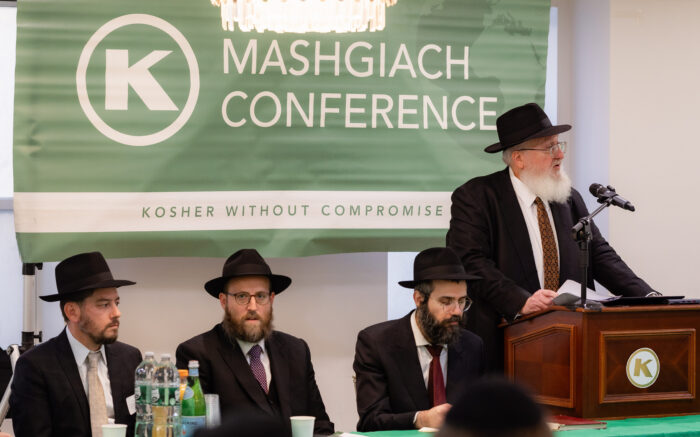Dear Reader,
The Pesach Haggadah is perhaps the sefer with the most printed versions of the same text. Thousands of versions of the Haggadah, each featuring different commentaries, have been printed over the years, making Haggados a feature in the collections of many seforim enthusiasts. In fact, in 2001 Sotheby’s hosted an auction in Tel Aviv, Magnificent Judaica, and the First Nuremberg Haggadah, illustrated and written by Joel Ben Simeon before 1449, sold for $1,017,000, nearly double its estimate. Erica Jesselson, a New York collector of Judaica and Jewish manuscripts, bought the Haggadah and it remains in Israel at the Israel Museum.
I recently came across a Haggadah, Tsuf Amarim, printed in 1920 (5681), that had the haskamah (endorsement) of Rabbi Levi Yitzchok Schneerson, father of the Lubavitcher Rebbe. This haskamah struck me, because in 1939, Rabbi Levi Yitzchok, Rav of Yekaterinoslav, was the Rav HaMachshir of all commercially produced shmurah matzah in the former Soviet Union, without compromising halacha even in the most difficult of times. In this particular Haggadah, I also found a haskamah from Rabbi Aharon Tumarkin, my maternal great-grandfather. I found a very interesting commentary on a familiar part of the Haggadah – the four sons. It says, Echad Chacham VeEchat Rasha VeEchad Tam VeEchad She’eino Yodea Lishol Why is echad repeated for each son? When all of the echads are added together, you get 52, which is the gematria of Ben (son). This teaches us that these sons are all really one person and all of us can have these traits in ourselves.” Also, if we don’t take the opportunity to ask questions, in halacha, in kashrus, in our dealings with others, and especially about the world around us – the crumbling economy, the constant demonstrations of hate against Eretz Yisroel – then we become the she’eino yodea li’shol, the one who does not know how to ask.
In this issue, we tackle some big questions. In Rabbi Zushe Blech’s article, “Know Thy Beans,” learn the answers to the questions regarding kitniyos on Pesach. What goes in to the daunting task of setting up a hotel with a kosher l’Pesach program? Find out in Rabbi Gornish’s informative article, “Pesach Hotels.” We also took the opportunity to ask Rabbi Hershel Krinsky, Rabbinic Coordinator at the OK, a few questions about his experiences in the field of kashrus. Delve into the depths of Chassidus as we explore the custom of Moshiach’s Seudah. In Rabbi Levy’s article, read about Rabbi Berel Levy, ob’m, as we mark his 21st yahrzeit – a maverick in the field of kashrus, who always knew to ask the right questions.
Speaking of the four sons in the Haggadah, the Pesach seder is geared towards the questions of children and can be especially difficult for couples experiencing the challenge of infertility who don’t have children of their own to ask the Four Questions at the sedarim. Read about Bonei Olam, the amazing chesed organization, dedicated to helping Jewish couples realize the dream of having children of their own.
With best wishes for a kosher and freilichen Pesach, filled with questions, and may we have the ultimate answer of Moshiach now!
Rabbi Chaim Fogelman
Editor-in-Chief
Rabbi Chaim Fogelman is a member of the OK Kosher Vaad HaKashrus.


 EN
EN  ZH
ZH  KR
KR  BR
BR  ES
ES  IN
IN  IL
IL 




